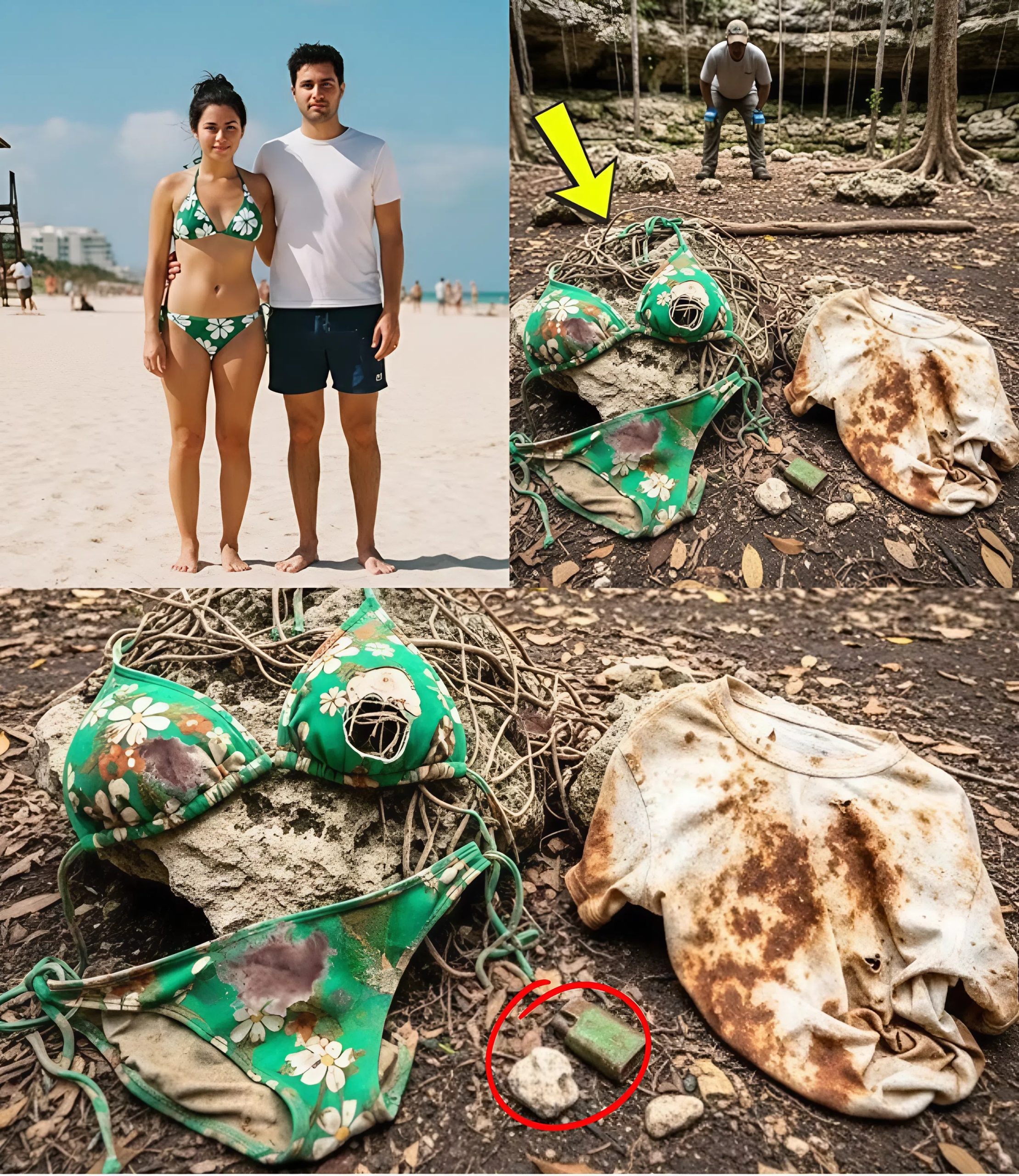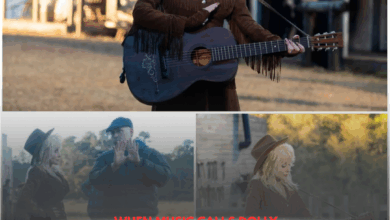TQ. Two decades later, Mariana and Alejandro’s story still lingers in the air—no closure, no forgetting, only the haunting question of what really happened.

A photograph that became a memorial
The camera caught them mid-laughter. July 2003. Playa Delfines, Cancún. Two young lovers framed by turquoise sea and merciless sun. Mariana Ramos Medina, 23, wore a green bikini with white flowers; Alejandro López Armenta, 24, stood beside her, shy before the lens, his hand half-raised in a gesture between pride and hesitation.
Discover more
Family games
Celebrity gossip magazines
Romantic anniversary gifts
Website security services
News content creation
Fast & Furious merchandise
News website theme
Space exploration books
Website disclaimer template
Breaking news alert
They were celebrating freedom. Both had just graduated from the University of Guadalajara—she in visual arts, he in engineering. It was their first real vacation, the first time they’d seen the Caribbean. They saved for over a year, booking a modest hotel with peeling paint and a fan that barely stirred the heat.
For three days, they lived the simple joy of being young: walking barefoot at dawn, eating grilled fish at markets, tracing names in the sand. Mariana sketched strangers in her notebook; Alejandro calculated the cost of everything in pesos, as if adulthood hadn’t quite released him from its grip.
Discover more
Buy vitamins and supplements
News aggregation service
Breaking news alerts
Royal family memorabilia
Dog
Fast & Furious merchandise
Airplane model kits
Breaking news alert
Content management systems
Website design services
That photograph, later developed from a disposable Kodak camera, would become their last known image. A frozen echo of a moment that promised beginnings—and instead marked an ending.

Into the jungle
On the morning of July 14, they sought something different. The sea, however beautiful, had begun to feel predictable. A hotel employee mentioned cenotes near Puerto Morelos—natural sinkholes hidden in the jungle, sacred to the Maya, avoided by tourists. “They’re not safe,” the man warned.
Alejandro, cautious by nature, proposed hiring a guide. Mariana waved him off. “We’ll be back before lunch,” she said, smiling the way only the brave or naïve do before a tragedy.
At 9:30 a.m., a shop owner named Leticia Gómez saw them near the Puerto Morelos highway. “They were laughing, drinking bottled water,” she recalled. “The girl asked where they could find the quiet trails.”
That was the last confirmed sighting.
When they didn’t return that night, the hotel receptionist didn’t think much of it—Cancún was full of couples who stayed out until dawn. But when noon came the next day and their room remained untouched, worry turned into alarm.
Inside were all their belongings: Mariana’s sketchbook filled with unfinished drawings, Alejandro’s expense notebook with a final line—Truck to P. Morelos 30. Their passports, wallets, and camera sat neatly on the nightstand. There was no sign of a struggle, no farewell, no explanation.
The vanishing
The official search began on July 16, two days too late. By then, the trail was cold, erased by rain and heat.
Local police, firefighters, and military units combed the Quintana Roo jungle, a labyrinth of limestone soil and tangled vegetation. Helicopters circled overhead. Drones—primitive at the time—mapped areas inaccessible by foot. Volunteers scoured trails, shouting their names into the thick air that swallowed sound.
Nothing.
No footprints, no discarded belongings, not even a piece of fabric. The cenotes were explored by divers—each descent revealing only darkness and silt.
One local guide told reporters:
“That jungle eats people. You take two wrong turns, and you vanish from the world.”

Authorities floated theories: maybe they got lost and died of dehydration; maybe they were robbed and buried in an unmarked grave; maybe they stumbled upon a cartel route or an illegal mining site.
But there were no bodies, no ransom, no clues. Just silence—dense and suffocating, like the air that day.
The families who never stopped searching
Both families arrived in Cancún on July 18, united by desperation.
Mariana’s mother, Elena Medina, a retired teacher, walked every trail herself for weeks, guided by local volunteers and a stubborn hope that defied reason. Alejandro’s father, Raúl López, an engineer like his son, brought maps, GPS coordinates, and the kind of faith that comes from needing to believe logic still ruled the world.
Every year after, they returned. New clues surfaced, then collapsed.
In 2008, a fisherman claimed he’d seen “a young couple walking toward the mangroves” the morning they disappeared. Police followed the lead—nothing.
In 2012, bones were found near a cenote outside Puerto Morelos. For months, hope flickered—until DNA proved they belonged to someone else.
Elena kept Mariana’s art portfolio sealed in plastic. Among the sketches was one titled El Regreso (The Return): two silhouettes facing a dark cavern. “She drew that the week before they left,” Elena said. “Sometimes I wonder if she already knew.”
Raúl refused to change his phone number. “In case he calls,” he used to say, half-smiling. He died in 2019 without an answer.
Best smartphone
The geography of disappearance
The disappearance of Mariana and Alejandro wasn’t just a personal tragedy—it was a symptom of something larger.
Between 2000 and 2005, as tourism boomed in the Riviera Maya, so did disappearances. The same jungle that lured explorers also hid cartel routes, human trafficking corridors, and illegal resource extraction.
An investigation by La Jornada in 2023 revealed that trails near Puerto Morelos overlapped with old smuggling paths. Local police at the time were understaffed and, in some cases, complicit.
Former investigator Tomás Herrera said in a rare interview:
“Back then, the jungle was a border between two worlds—the tourist paradise and the criminal underworld. If you crossed into the wrong one, you didn’t come back.”
Could Mariana and Alejandro have seen something they shouldn’t have? Were they mistaken for others? Or did they simply vanish into the landscape’s merciless geography—a place that remembers everything except the people it swallows?
These questions still haunt those who study the case.

Twenty years later — memory against silence
Two decades later, their story persists, not because of new evidence, but because of its enduring resonance.
In Guadalajara, a group of art students organized an exhibition last year called “Los Que Faltan” (Those Who Are Missing). Mariana’s last photograph—her smiling before the sea—was displayed beside empty frames representing the countless others who disappeared without trace in Mexico.
Every July 14, family and friends gather at Playa Delfines. They light candles, place flowers on the sand, and release floating lanterns into the water. The ceremony is quiet, almost sacred—a refusal to let the waves erase them entirely.
Family games
Elena speaks each year. “People say time heals,” she told a local journalist in 2023. “But time doesn’t heal. It only teaches you how to live with a wound that won’t close.”
Online communities—digital detectives, amateur investigators—have revived the case, analyzing satellite imagery, comparing maps, and contacting locals who lived near Puerto Morelos in 2003. Their work has brought attention back to the case, though not the closure the families crave.
What they have achieved, however, is perhaps more profound: they’ve turned forgetting into an act of resistance.
The unfinished journey
If you visit the Cancún archives today, you can still find the case file—its paper yellowed, its pages marked “inconclusive.” Some photographs remain attached with rusted clips: the hotel room, the backpack, the sketchbook. But the final section—the one meant for closure—remains blank.
The jungle has reclaimed the trails they once walked. The cenotes still shimmer, deep and unknowable. Tourists pass by, unaware that somewhere beyond the palm trees lies a story of two lives paused in midsentence.
Perhaps Mariana and Alejandro’s tragedy is less about what happened than about what it revealed: how fragile our sense of safety is, how easily adventure can tip into abyss, how silence becomes the true author of loss.
Their parents believed the truth was buried somewhere in that green immensity. Maybe it still is. Or maybe the truth now belongs to the same realm as memory—shifting, elusive, half-remembered.
The last image
The photograph survives, framed in Elena’s living room. Time has bleached it pale, the sea now almost silver, the sky a faded blue.
Two figures, frozen at the edge of the world. Their smiles defy what came after.
Twenty years later, that image still radiates something unbearable—a promise interrupted, a journey half-complete.
And so, every retelling becomes its own act of devotion. Because there is no forgetting here—
only questions that echo through time,
and two young souls still walking the invisible trail between memory and disappearance.

